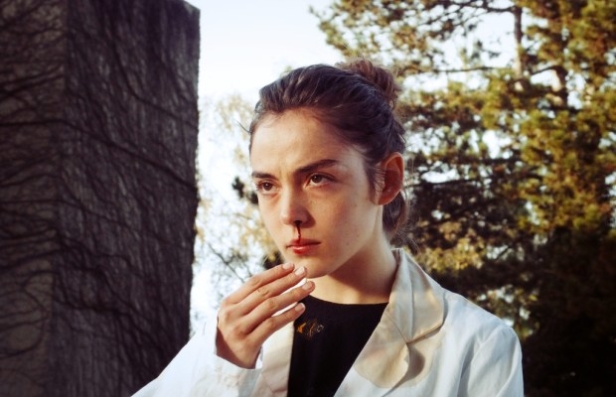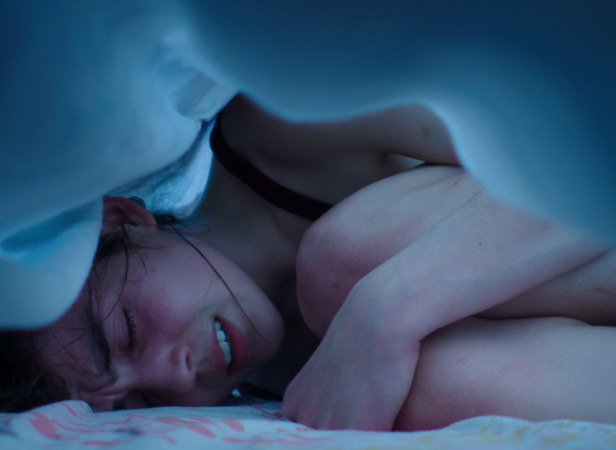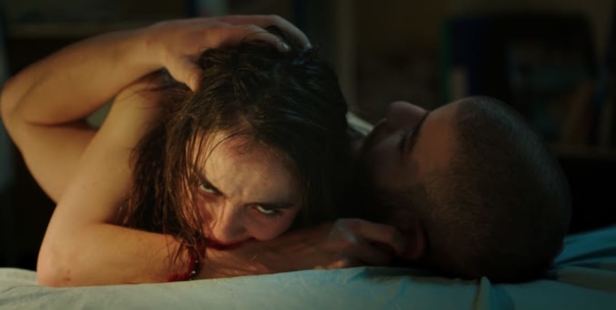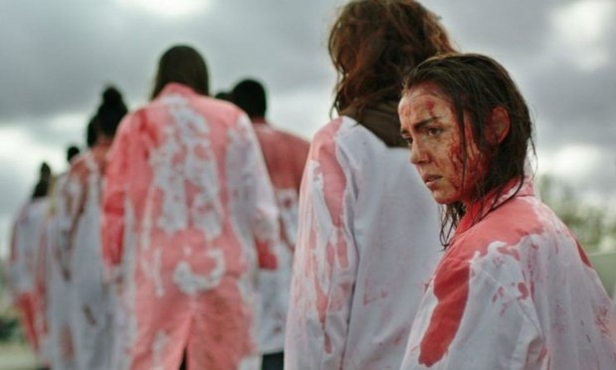If you’ve heard of Julia Ducournau’s Raw, you’ve probably heard about the reaction to it as well. People fainting in festival screenings. Shocked reports of how intense and gory it is. Some theatres have even put out barf bags, for goodness’ sakes. The fact is that, while Raw is certainly intense, it’s far more than a stomach-churning horror. It’s an emotionally complex coming of age tale rich with dark comedy and genuine emotion.
Teenager Justine (Garance Millier) arrives at a prestigious veterinary school and quickly finds herself caught up in the pressures of campus life. During a hazing ritual, her older sister forces the vegetarian Justine to eat a piece of rabbit offal, which sets off a series of terrifying events. Her body begins to change, her appetite for meat grows stronger, and she’s losing control…
We caught up with Ducournau at the London Film Festival to talk about the reactions to the film, the importance of the sibling relationship, blending genres and the joy of David Cronenberg.
Raw certainly seems to be getting some strong reactions. How have you found the response so far?
Overall, very good. It’s been very well received, I’m super happy about it. It’s funny how the reactions vary from one audience to the other. I don’t stay for each screening, but I like talking about it because people have a different take on everything. It’s very interesting because you rediscover your own movie, you know?
Had you always conceived it as a coming of age story?
The thing is, I didn’t think about it like “I want to make a coming of age thing.” I wanted just to make my movie and I have my grammar, which goes from comedy to drama to body horror, it’s a bit of a mix of all this. So eventually I knew it would be a coming of age story, just because my character is 16 and it’s on a campus, so that part of the story developed by itself.
But my main concern was really to make the audience relate to a character that commits an act that they would qualify as inhuman and understand this act and understand what she’s going through at this moment, and fear for her, and feel for her. So that was the main challenge of the movie.
The complex relationship between Justine and her sister Alexia (Ella Rumpf) is obviously key to that…
Yeah, of course, the thing that’s great about siblings is that you can love and then you can hate like crazy and then you can love again, like it’s the only person who is important in your world, and then hate. And in between these moments you don’t have to explain anything. Why it goes from love to hate or anything, it’s just like that.
There is this blood bond that absolutely doesn’t need any explanation. It’s just because this person is your sibling, and I thought it was very interesting to tackle. And it would give a lot of depth to my movie, to also make it about the dividing of a cell. They have to grow apart in order to keep on living in a way, and to become other, especially for Justine to become a real adult.
A lot of coming of age horrors are set in high school, was it important to set it at university?
Yes, the character is 16 and I wanted her to be confronted with a universe that is very much sexualised and autonomous, two things that she’s never been, and it would not have been possible in high school. I also needed her to be the youngest.
The campus is such an amazing location. Was it easy to find?
It was difficult at first and then we got very lucky. I really did not write with any visual references, all the locations are in the script or are just in my head, and I always figured we’d just take four or five locations that will make my mental space alive, like a Frankenstein’s Creature.
The problem is that, even if I didn’t write for a specific environment, I had very specific desires for the location. Mainly that the architecture should be from the 70s, that is a bit trippy, weird architecture with a lot of angles and a strange perspective, and it was important that there was a lot of concrete. It was also supposed to be like a US campus, like a city, a very big thing, and it also had to have a veterinary school in which we could shoot.
So a lot of things that made things very difficult. We did not find this in France and this is why once we were at the Frontiers festival in Belgium and we met our co-producer and I told him about this location, and he said “Oh my god, but I have this in my town!” He showed me pictures and it was exactly what I had in mind. Exactly. I was amazed because I had never heard about this place before!
Anything with body horror and biological study in it feels like it will get compared to David Cronenberg, but was he an influence?
David Cronenberg is definitely a big influence for me. It’s weird when we talk about influences, it’s not like a reference, I’m not referencing any of his movies in the film, but he’s a deep influence for me because the first time I saw his movies I felt very much alive and it left me a lot to think about. And the way he approaches the body is something I can really relate to, with this unyielding fatality that is almost scientific. So yeah, he is definitely an influence.
The film moves from dark comedy to drama to horror frequently. Was it a challenge to keep a grip on those tones?
Absolutely, it was the biggest challenge of the writing, balancing the three genres and finding the right way to use each one as a catharsis. Because all of them work as catharsis. The relief through laughter, the relief through tears and the relief through fright with the body horror. So yeah, it took a lot of time.
It was very interesting to work on this, to be honest, even if it was hard. But there was no other way. I really did not feel like I was writing neither a teen movie nor a social drama or a family drama, nor a horror movie. My movie is all this and none of this at the same time.
What was the process like of casting Garance Millier to play Justine?
Well, I had no problem because Garance is in all my movies; she’s in my first short, my TV feature and this one. It’s the third time we’ve worked together, we are very, very close, and so working with her is great because she’s such a great actress.
One thing that I love about her is that the level is already super high when you start the rehearsal, so it can only go higher, and also the fact that we know each other very well, it makes it easier for us to trust each other and to communicate. Even when we clash, it’s over in two seconds. We’re very temperamental, both of us, but we have a very unique way of working together in the sense that I don’t need many words with her.
We work a lot around the body or with key words; we just talk before the shoot. I always take two months to talk a lot about the characters to be sure that everyone knows how they relate to the character and what they have to defend with him or her, and then on the set I try to be really more focused on the performance, on the bodies and everything.
How was it working with real animals for the veterinary scenes?
It was thrilling! It was great, I really loved it. Some scenes are a bit like a documentary. When the horse is put to sleep, it was real veterinarians in the shot, and of course we didn’t put it to sleep just for us, this horse had to go into surgery. So we put two cameras in and I knew what I wanted to film because I had seen it before, so I told them put the camera here and here, I want to see this and that, and we did it in one shot.
And what’s great about animals is that you have this tension. It’s very beautiful to watch but you have this tension because you don’t know how they’re going to react and if they’re going to do exactly what you want them to do. Especially these kinds of animals and especially when they’re anaesthetised. So again, it was very interesting for everyone.
There are a couple of scenes in the film that play with audience expectations when it comes to gruesome, shocking moments, specifically the waxing scene. Is it fun to see how people react?
Of course, it’s clearly calculated. Yes of course, it’s very satisfying when it works! It’s really great. I love that scene because it goes from comedy to tragedy in a jiffy and I think there’s something very sad about it, I find it very beautiful.
Finally, what would you recommend that people go and watch next if they loved Raw?
All Cronenberg. Everything by him. The Elephant Man…and Suspiria.
Raw is released on 7 April. Keep up with the latest genre news with the new issue of SciFiNow.



